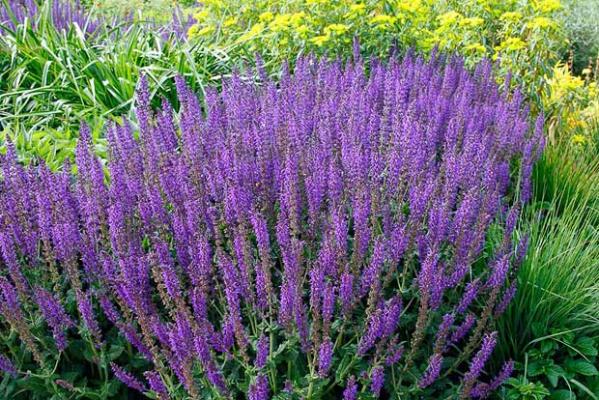3 Miraculous Plants Used in Medicine

In the attempt to keep a cautious distance away from pills and other medical products, some rely on Nature’s shoulder when it comes to treating a mild health problem. Alternative medicine is not a new trend, as people have used plants in healing illnesses and wounds for centuries. Here are some of the plants that we are grateful for:
Sage

“Those that grow sage will live to of age,” states an old Chinese saying. This plant presents a wide variety of benefits and in ancient Rome, sage was considered to be a sacred plant. As a matter of fact, the name of “sage” comes from “salvere” (latin), which means “saving”.
What does it contain?
Volatile oils, tannin, potassium nitrate and vitamin A, C and B1.
What does it do?
Sage contains various active substances that play an important antiseptic, antimicrobial and anti-inflammatory role. On the account of this benefit, the infusion of fresh sage can help those that suffer from respiratory, intestinal and urinary infections and inflammations. For instance, decoction of sage (extraction of substances by boiling the plant) can calm a cough, clear a stuffy nose and save you from neck pains.
The substances contained by the sage can reduce fever, calm muscular pain and help with the elimination of bronchial secretions (that frequently come with a flu). Moreover, sage can also improve the quality of memory during your lifetime.
How can you prepare it?
Infusion: 1 teaspoon of plant needs to be infused in 250 ml of boiled water. After 10 minutes, the tea needs to be filtered and drunk sugar-free. Normally, you can consume 2 cups a day.
Decoction: 2 teaspoons of dried plant need to be boiled for 5 minutes in 250 ml of water. This quantity should be drunk step by step during a whole day.
Nettle

The nettle plant grows almost anywhere: in gardens, in pastures, along rivers, roads, in forests or in places where sheep used to be raised. The plant can be easily recognized the moment you first lay hands on it as it is stingy and produces a light skin irritation. This is because it releases formic acid that usually has this reaction when in contact with skin. That is why cultivating nettle should be done while wearing gloves and when the plants are young.
What does it contain?
Formic acid, acetic acid, vitamin A, B2 and K, volatile oil.
What does it do?
Even from Medieval times, the nettle is used as a diuretic (substance that activates the urinary secretion). Therefore, it can be an adjuvant for those suffering from renal illnesses. Moreover, it can treat dysentery and inflammatory stated of the digestive tube, as it is a good “soldier” to use against intestinal worms. It can cure anemia, rheumatism and even exterior wounds, as it is a good healing plant.
How can you prepare it?
For internal use: Infuse 1 spoon of nettle leafs in one cup of water and drink 2-3 cups daily.
For external use: Prepare 50g of nettle leafs in 1 liter of water and apply in the form of compress.
Arctium lappa (greater burdock)

The burdock is a biannual plant that resists extreme temperatures and it is rather accessible as it grows in the less pretentious places, from pasture to mountain regions. The burdock has an unmistakable image, thanks to its big leafs that can even grow into 60-70cm in diameter. For medical purposes, people usually use the root of a burdock for extracts and powder, while the bitter leafs are used for infusions.
What does it contain?
The burdock root contains a sweet substances called inulin (an effective prebiotic). It also contains antibacterial compounds. The leafs contain arctiopicrin, a bitter substance that gives the burdock its specific taste.
What does it do? & How can you prepare it?
Against stress: 1 teaspoon of burdock powder 3 times a day on an empty stomach
Or
½ teaspoon of burdock root with the same amount of linden flower and basil, boiled in a cup of water. The infusion should be consumed during a whole day.
Activates a lazy liver: The liver can easily be affective by some substances such as medicine or alcohol. The burdock can help the liver eliminate toxins that come from these substances. Moreover, this miraculous plant can also stimulate the hepatic function.
You can prepare tea from 1 spoon of grated burdock root and 300 ml of boiled water. The mix should be boiled for 2-3 minutes, left to infuse for 15 minutes and then filtered. You can drink 1 cup of tea during a whole day, for 14 days.
A good cure against falling hair: Mix 2 teaspoons of burdock root in 1 glass of water and leave it to macerate for 6-8 hours. Then, the solution should be filtered and the plants that remain after this should be boiled 5 minutes in 200 ml of water. The two solutions will be then mixed and used weekly in massaging the scalp, after washing and cleaning the hair.




